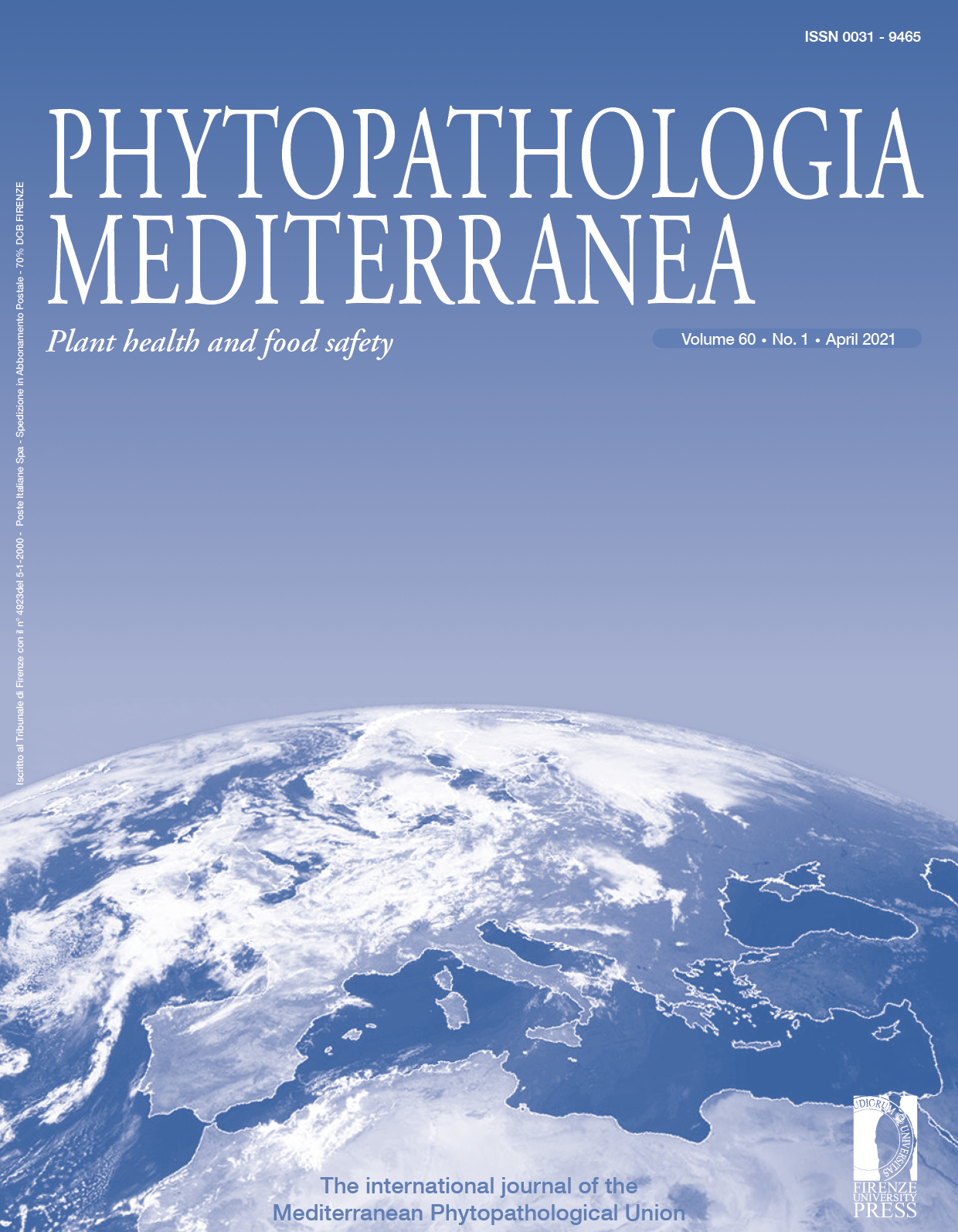Antifungal activity of hydroxytyrosol enriched extracts from olive mill waste against Verticillium dahliae, the cause of Verticillium wilt of olive
Published 2021-05-14
Keywords
- Olea europaea,
- enriched extracts,
- phenolic compounds,
- fungus inhibition
How to Cite
Abstract
Verticillium wilt (caused by Verticillium dahliae Kleb.) is an important disease affecting olive (Olea europaea L.) production. Effective control of this disease relies on integrated management strategies. In vitro antifungal activity of two hydroxytyrosol (HTyr) enriched extracts (HTE1 and HTE2) obtained from olive mill waste products (OMWP) was assessed against V. dahliae. Inhibitory effects of pure HTyr as a standard, and HTE1 and HTE2 at different concentrations, were evaluated on mycelium growth and conidium germination of V. dahliae. Chemical characterization of HTE1 and HTE2 allowed identification and quantification of HTyr as the main constituent in both extracts along with other low molecular weight phenols. HTE1 showed a higher inhibitory activity in both growth and conidium germination of V. dahliae. At the tested concentrations, low antifungal effects of HTyr were observed. After 3 d, 1 mg mL-1 of HTE1 gave greater inhibition of mycelium growth than HTE2 or HTyr. After 24 h, HTE1 gave 55% inhibition of conidium germination, and HTyr and HTE2 both gave 37% inhibition. This study has demonstrated that phenolic compounds derived from OMWP have antifungal activity against V. dahliae, indicating the potential of these compounds for eco-friendly control of Verticillium wilt.







